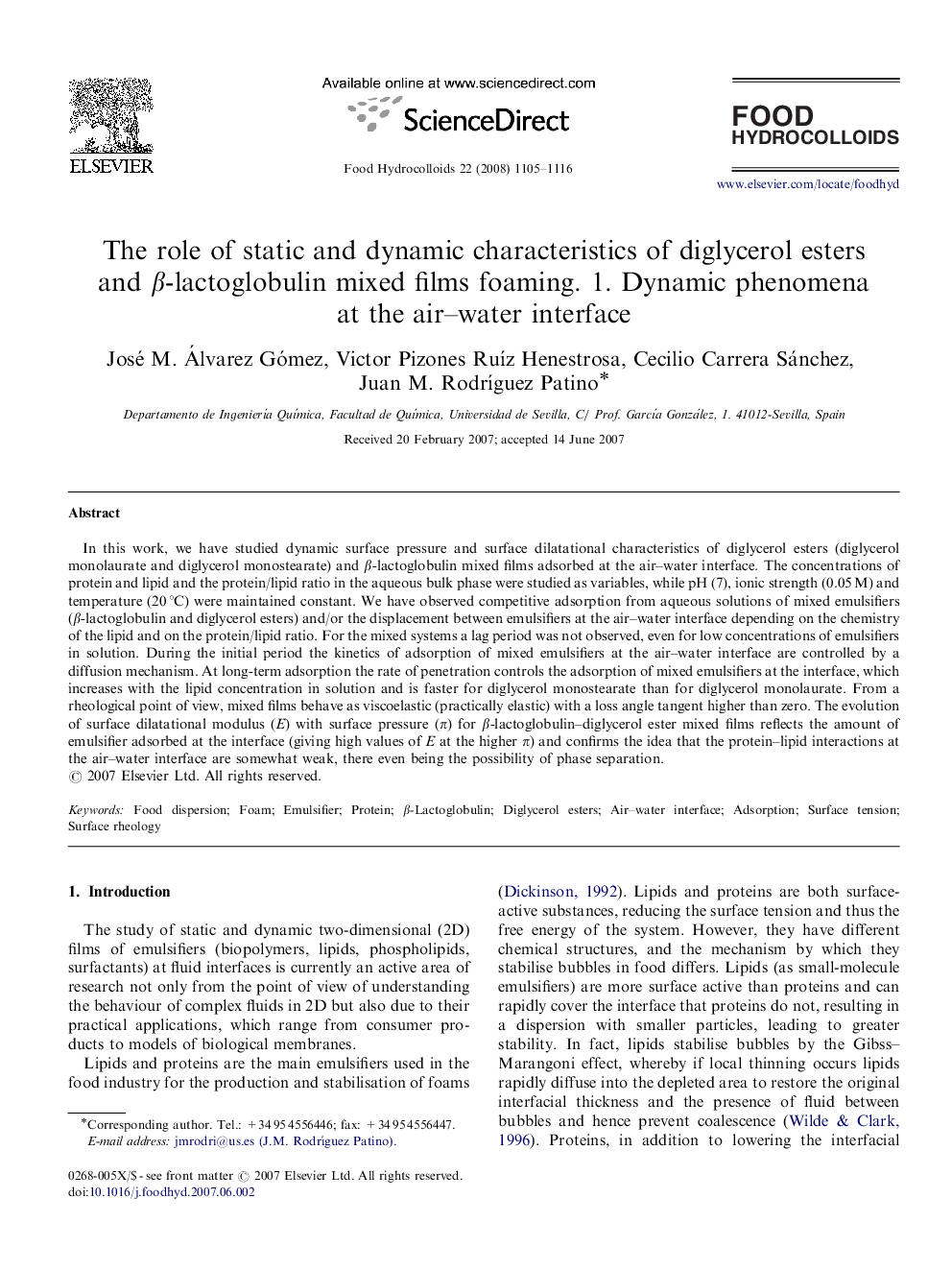| Article ID | Journal | Published Year | Pages | File Type |
|---|---|---|---|---|
| 605276 | Food Hydrocolloids | 2008 | 12 Pages |
In this work, we have studied dynamic surface pressure and surface dilatational characteristics of diglycerol esters (diglycerol monolaurate and diglycerol monostearate) and β-lactoglobulin mixed films adsorbed at the air–water interface. The concentrations of protein and lipid and the protein/lipid ratio in the aqueous bulk phase were studied as variables, while pH (7), ionic strength (0.05 M) and temperature (20 °C) were maintained constant. We have observed competitive adsorption from aqueous solutions of mixed emulsifiers (β-lactoglobulin and diglycerol esters) and/or the displacement between emulsifiers at the air–water interface depending on the chemistry of the lipid and on the protein/lipid ratio. For the mixed systems a lag period was not observed, even for low concentrations of emulsifiers in solution. During the initial period the kinetics of adsorption of mixed emulsifiers at the air–water interface are controlled by a diffusion mechanism. At long-term adsorption the rate of penetration controls the adsorption of mixed emulsifiers at the interface, which increases with the lipid concentration in solution and is faster for diglycerol monostearate than for diglycerol monolaurate. From a rheological point of view, mixed films behave as viscoelastic (practically elastic) with a loss angle tangent higher than zero. The evolution of surface dilatational modulus (E) with surface pressure (π) for β-lactoglobulin–diglycerol ester mixed films reflects the amount of emulsifier adsorbed at the interface (giving high values of E at the higher π) and confirms the idea that the protein–lipid interactions at the air–water interface are somewhat weak, there even being the possibility of phase separation.
